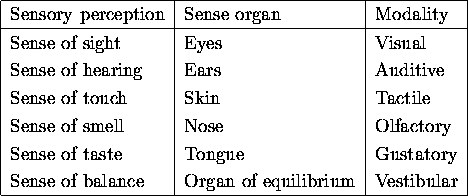
Table 1.1 : Different senses and their corresponding modalities (taken from: [311])
According to [67], modality is defined as follows:
`` Perception via one of the three perception-channels. You can distinguish the three modalities: visual, auditive, and tactile (physiology of senses).''

Table 1.1
: Different senses and their corresponding modalities (taken
from: [311])
In our opinion, the sense of smell and the sense of taste
are not very interesting for our concerns (see 2.1.1
Whenever more than two of these modalities are involved, we will speak of multimodality. To be more precise, in some cases we will also use the term bimodal (or bimodality) to denote the usage of exactly two different modalities. In this sense, every human-computer interaction has to be considered as multimodal, because the user looks at the monitor, types in some commands or moves the mouse (or some other device) and clicks at certain positions, hears the reaction (beeps, key clicks, etc.) and so on.
Therefore, in our understanding of multimodality is restricted to those interactions which comprise more than one modality on either the input (i.e., perception) or the output (i.e., control) side of the loop and the use of more than one device on either side. Thus, the combination of, e.g., visual, auditive, and tactile feedback which is experienced by typing on a keyboard is explicitly excluded, whereas the combination of visual and auditive output produced by the monitor and a loudspeaker when an error occurred is a 'real' multimodal (or --- in this case --- bimodal) event.